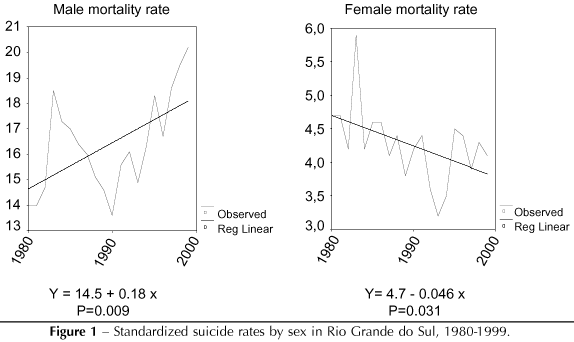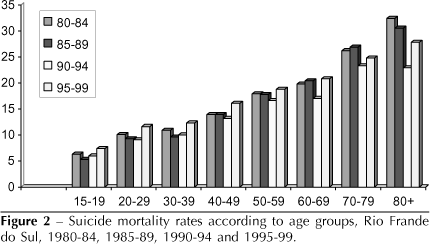Abstracts
OBJECTIVE: To describe epidemiological aspects of suicide mortality in a 10-year time series. METHODS: Suicide deaths reported in the state of Rio Grande do Sul (RS), Brazil, were put together as historical time series based on data from the Ministry of Health Mortality Reporting System for the period 1980 to1999. Suicides were grouped according to the WHO criteria and analyzed using standard demographic variables. RESULTS: Suicide rates (proportional mortality and mortality rates) in RS during the study period were the highest in Brazil. The standardized rates grew from around 9 per 100,000 in the 1980s to 11 per 100,000 in 1999. This increase in mortality was attributed mainly to male mortality rates that grew from 14 per 100,000 to the current 20 per 100,000. The male:female ratio increased from 3 to 5. The highest ratios were seen among the elderly although this ratio has been increasing in young adults as well. Widows, widowers and farmers/fishers had the highest mortality rates. CONCLUSIONS: The study highlights suicide as a collective health problem in RS and shows aspects that could contribute to preventive action.
Suicide; Statistics numeric data; Mortality rate; Mortality

 Epidemiological aspects of suicide in Rio Grande do Sul, Brazil
Epidemiological aspects of suicide in Rio Grande do Sul, Brazil



